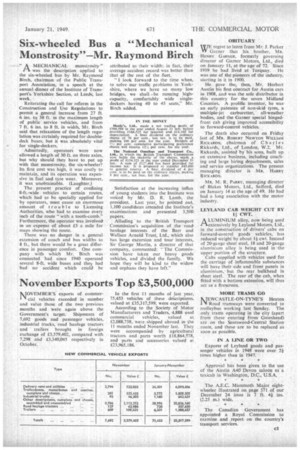LEYLAND CAB WEIGHT CUT BY 11CWT.
Page 9

If you've noticed an error in this article please click here to report it so we can fix it.
A LUMINIUM alloy, note being used t—kextensively by Leyland Motors, Ltd., in the construction of drivers' cabs on forward-control goods vehicles, has reduced weight by about 1+ cwt. Instead of 20-gauge sheet steel, 18 and 20-gauge aluminium alloy is being used in the upper portion of the structure.
Cabs supplied with vehicles used for the carriage of inflammable substances will have their side and front panels in aluminium,' but the rear bulkhead in sheet steel. The rear of the cab, when Fitted with a bottom extension, will thus act as a firesereen.
MORE TRAMS GO N1EWCASTLE-ON-TYNE'S Heaton I Road tramways were converted to troIleybus working last Sunday. The only trams operating in the city (apart front those entering from Gateshead) are on the Scotswood-Central Station route, and these are to he replaced as soon as possible.
IN A LINE OR TWO . Exports of Leyland goods and passenger vehicles in 1948 were over 2+ times higher than in 1947.
Approval has been given to the use of the Austin A40 Devon saloon as a taxicab in Washington, D.C., U.S.A.
The A.E.C. Mamenoth Major eightwheeler illustrated on page 571 of our December 24 issue is 7 ft. 4+ ins. (2.25 m.) wide.
The Canadian Government has appointed a Royal Commission to examine and report on the country's transport services.




























